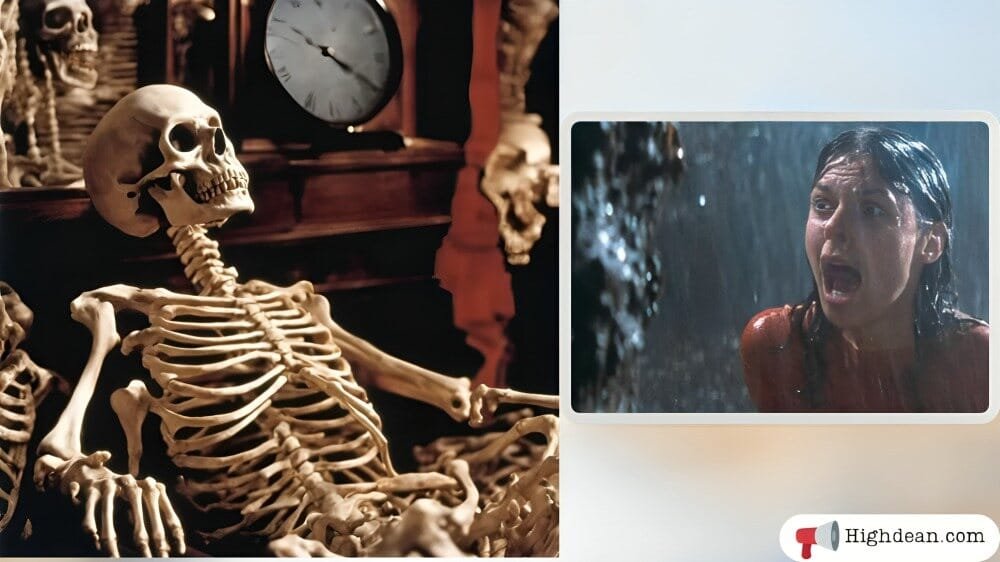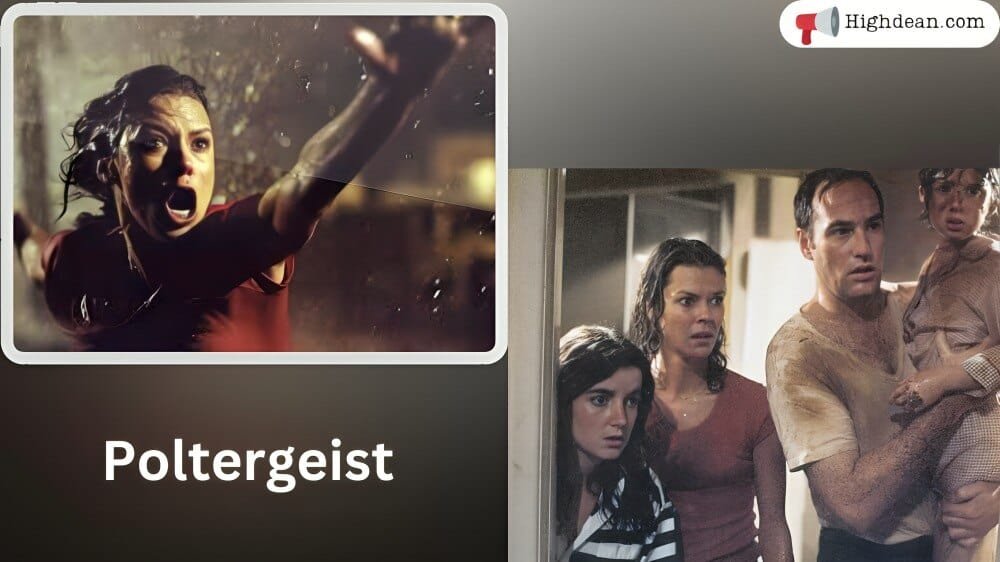Possessing scenes that are still chilling to this day the horror film Poltergeist was released in 1982 with the direction by Tobe Hooper and the production by Steven Spielberg. While the film is celebrated for its groundbreaking special effects and haunting storyline. It also harbors a chilling secret that continues to stir controversy to this day: The other interesting element to note from the movie is the incorporation of real skeletons in the filming. In this article we will explore the 1982 movie poltergeist used real skeletons as – tymoff.
Why Fake Skeletons Were Not Used?
Special effects technology in the early 1980 was not as developed as it is now and this fact has to be taken into account. ‘Practical’ effects were in fact the undeniable foundation of most movies from the ‘horror’ category, including ‘Poltergeist. ‘ Practical effects were inevitable in the production process mainly because the realistic materials were necessary for the scenes to look convincing or as real as they were portrayed to be. Amazingly, people’s real bones were even cheaper and easier to get than professionally made silicone reproductions. In an interview with special effects artist Craig Reardon who worked on the film he stated that as he found out acquiring real skeletons through medical supply houses was not only cheap but was the norm in the seventies.
The 1982 Movie Poltergeist Used Real Skeletons as – Tymoff: Controversy and Ethical Concerns

The information regarding the utilization of the real bones in the shooting of Poltergeist was one of the most scandalous which ever heard. Merely using human remains for entertainment is a question of morality, or ethical standards. It appears rather insensitive and nonchalant towards the dead, and their families, and reduces human remains to part props which deserve no respect. But instead deserve to be hidden away like relics. This led to a change of policy practices within industries resulting in improved rules and ethical codes that could avoid such circumstances in future.
Consequences for the Cast and The Crew
The impact on the cast and crew of ‘Poltergeist’ also had an effect of using real skeletons especially when some of them were not aware of that decision. They felt rather uneasy once they got to know the truth. JoBeth Williams, who was one of the leads in the film said she felt very uncomfortable during the shoot of the pool scene without knowing that the so many skulls surrounding them were real. This discomfort only added to the film’s eerie reputation and fueled rumors of the so-called “Poltergeist Curse,” which speculated that the use of real skeletons contributed to a string of tragic events affecting the film’s cast members.
The 1982 Movie Poltergeist Used Real Skeletons as – Tymoff: The “Poltergeist Curse”
The deaths that have affected the actors in the Poltergeist are widely attributed to the real skeleton shoot and this have made fans give it the curse name. As to the fact of the curse, it is still debated today, but it only contributed to the mythology of the film. Everything from drowned actress launch to beautiful Heather O’Rourke and successive Dominique Dunne to others have been associated with this fiction curse keeping the film alive frequently in the public domain and contributing another scary part outside the screen.
The Cultural Effect of Such a Controversy

Real skeletons as props in “Poltergeist” is one of those decisions which influenced the horror fans and everyone else who saw this movie. It provoked thoughts that inspire about the extent to which directors are willing to go to give the audience an authentic feel of what they are portraying and if this is justified especially when the directors cross the ethical line. This controversy is kept alive through documentaries, articles, and interviews that are still thrown light at the true events behind all this. The consequence of making “Poltergeist” is not only that it set the standards for horror movies. But also that it serves to be a story to be told about the immoral working methods that can be applied in making a film.
Changes in Industry Practices
The critiques for the use of real skeletons “Poltergeist” gave immense impact and made drastic shift change among the film industries. Today, the employment of human remains in a movie is restricted, or banned altogether. It is also quite expected that the ideas of ethical aspects and the search for analogs not involving real human remains should be contemplated by filmmakers. This change has made the view more creative and considerate towards the deceased which form the basis of special effects.
Advancements in Technology
Modernity also reached a new level in CGI and AI technologies that in combination allow making extremely realistic scenes instead of using real bones and other mortal remains of people in the movies. These technologies have helped the filmmakers to re-define horror movies and make the appealing level of realism possible while being ethical. The use of CGI has not only made productions safer and more respectful but has also opened new avenues for creativity in filmmaking.
Lessons Learned
Using the example of “Poltergeist” one may conclude that ethical issues remain to be at the forefront for motion picture creators and producers. This shows that the participants should adhere to the principles that include transparency. Respect for human dignity and being responsible to people involved in the supply chain. It means that the lessons learned from “Poltergeist” are quite significant in this context and demonstrate how the history of filmmaking remains a vital guideline for those who are still experimenting with the Islamic paradigm in features today: yes, it is liberating to follow creativity when venturing deep into the artistic. But one must remember that moral standards do matter.
Legacy and Reflection
Even though the film “Poltergeist” is widely considered a classic of the horror genre and boasts impressive technical aspects it also deals with ethics. Its influence lies in becoming an iconic film whose story is tied up in discussions of which it is best to avoid: namely, the use of real skeletons. Looking at how the movie was made and what the goal was and where the industry is now regarding technology and technology abuses. “Poltergeist” is a prime example of how creativity must always be tempered with morality.
Conclusion
The facts about the shooting using real skeletons in “Poltergeist” is one of the most curious and creepy episodes in the history of film. This example is also criticised that how the chase of cost-cutting and realism often ends up being ethical failures. What we have seen regarding “Poltergeist” is both the innovation and the cautionary tale of ghost films hence aspiring for authenticity but not without regard for the standards of human decency and ethical standards. This is all we have to share about the 1982 movie poltergeist used real skeletons as – tymoff.
FAQs
Ans. The filmmakers used real skeletons because they were cheaper and more readily available than high-quality plastic skeletons at the time. This decision was made to achieve realistic effects on a limited budget.
Ans. Not all cast members were aware. Some, like JoBeth Williams, later expressed discomfort upon learning that real skeletons were used. Particularly in scenes like the pool sequence.
Ans. The use of real human remains for entertainment was criticized as disrespectful to the deceased and their families. It raised ethical concerns about the treatment of human remains and prompted stricter regulations in the film industry.
Ans. The “Poltergeist Curse” refers to a series of untimely deaths among the film’s cast members, which some fans believe were linked to the use of real skeletons. While the existence of the curse is speculative, it has contributed to the film’s eerie legacy.
Ans. The controversy led to changes in industry practices, including stricter ethical guidelines regarding the use of human remains in films. It also encouraged the adoption of advanced special effects technologies, such as CGI, to create realistic scenes without ethical violations.
Also, Read About:-
